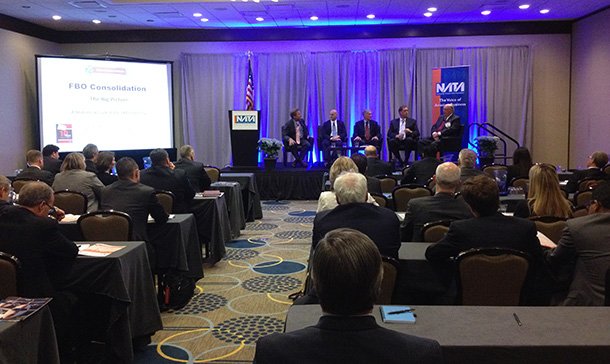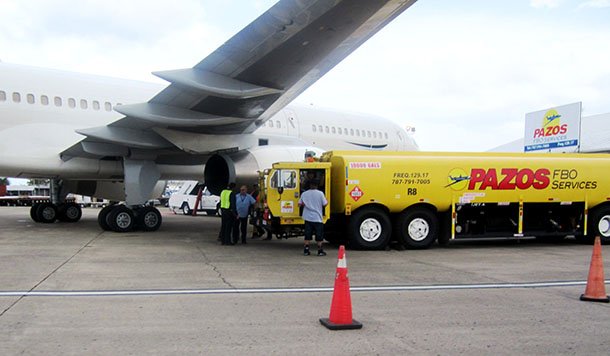By John L. Enticknap and Ron R. Jackson, Principals, Aviation Business Strategies Group
We often receive inquiries from FBOs and business aircraft handlers wondering whether IS-BAH (International Standards for Business Aircraft Handling) is right for them.
To answer this question properly, we have to take a look at each FBO and service provider individually to determine the merit an IS-BAH registration brings to the enterprise.

At face value, an IS-BAH registration has importance for many FBOs seeking to demonstrate to customers a commitment to a high level of international safety standards. Of course, safety is both a practical and necessary core value for a successful FBO operation. The IS-BAH registration process is a qualitative measure through which to demonstrate this commitment.
The benefits of an IS-BAH registration can include:
- Enhancing the image of the company by demonstrating to current and potential customers that it operates and conforms internationally to a very high standard of safety.
- Creation of an internal culture that has a heightened awareness for achieving greater operational and safety levels throughout the enterprise.
- Potential discerning customers will look for the IS-BAH registration designation as a way to differentiate one service provider from another.
Promotional information for the IS-BAH registration process states that:
IS-BAH was established as a way to identify and promote the use of industry best practices by means of a progressive Safety Management System (SMS) for both Fixed Base Operations and Business Aircraft Handling Agencies (BAHA). IS-BAH follows the structure of the International Standard for Business Aircraft Operations (IS-BAO) Program and incorporates the NATA Safety 1st Ground Audit Program. The standard is based on the International Civil Aviation Organization (ICAO) standards as well as recommended practices in the preparation of handling business aircraft.
Although conforming to IS-BAH established standards is voluntary at this time, recognition for implementing and conforming to the standards can be confirmed through an auditing process which results in an International Business Aviation Council certificate of registration.
Central to the IS-BAH registration is the SMS that most charter operators have adopted over the past several years. Some of the FBOs that have already established IS-BAH registration have operated a charter department and have an SMS in place. Many of the FBOs seeking IS-BAH registration will probably not have an SMS in place, so they must develop one.
When we do an evaluation for a client seeking a potential IS-BAH registration, we look for whether or not the FBO or business aircraft handling company has truly invested in creating an internal culture that is safety oriented. We also want to see whether the organization has in place any of the required manuals and procedures that are described in the following evaluation checklist. If not, we can assist in writing and developing company-specific manuals along with training and implementing these plans.
The following is an abbreviated version of our IS-BAH registration checklist:
SMS Processes in Place and Being Utilized
Having a written SMS document is one thing. Utilizing it and making it part of your safety culture is quite another. As mentioned, the SMS is central to the IS-BAH registration process. In order to attain an IS-BAH registration designation, there has to be demonstrable proof that the SMS is being utilized and that safety issues are being reported and acted upon.
Employee Safety Training Program and Record Keeping in Place
Safety training programs, such as NATA's Safety 1st, help create a standardized teaching tool to ensure consistent levels of training. When IS-BAH auditors are engaged, they want to see that safety training records are kept on each individual employee involved in the aircraft handling process. They also want to see a history that the records are kept current and updated as needed. Therefore, a commitment to implementing and honoring these types of training programs needs to be demonstrated.
Designated Person of Accountability, Safety Manager and Training Manager in Place
Part of the evaluation is determining whether the FBO or ground handling company has the proper staffing in order to ensure there is a commitment to both safety training and safety accountability. Usually, the owner/operator or FBO manager is the designated person of accountability. As President Harry S. Truman said, the buck stops here.
Standard Operating Procedures (SOP) Manual in Place and Functioning
Adhering to current industry standards of effective best practices and detailing these practices in an SOP manual that is taught and utilized within the FBO enterprise are major parts of the IS-BAH audit review.
Emergency Response Plan (ERP) Detailed and Simulated
An ERP is a valuable resource that should be kept in a convenient and accessible location. It details emergency procedures and should include records of simulated emergencies that are being conducted and managed. An ERP is written to include protocols for interacting with specific emergency agencies on a local, regional and national level.
Environmental Management System (EMS)
FBOs need to develop an EMS plan that incorporates their environmental responsibilities for dealing with hazardous materials and environmental issues including, but not limited to, sump fuel, batteries, waste oil, international garbage and aircraft noise abatement. As part of an EMS, FBOs must also include management of their SPCC (Spill Prevention, Control and Countermeasure) plan and coordinate with the airport staff on the proper procedures for the SWPPP (Storm Water Pollution Prevention Plan).
For the FBO that is not currently utilizing an SMS or is missing one or more of the items on the checklist, the IS-BAH registration process will take a little longer.
So is IS-BAH right for your operation? Hopefully we've provided enough information that you can get a sense of what you want to achieve. We encourage FBOs and ground handlers to consult with an IS-BAH specialist and, as required, attend the Fundamentals of IS-BAH Workshop. Also, you can give us a call or send us an email with any questions you have (404-867-5518; email: jenticknap@bellsouth.com).
ABOUT THE BLOGGERS:
John Enticknap has more than 35 years of aviation fueling and FBO services industry experience and is an IS-BAH Accredited auditor. Ron Jackson is co-founder of Aviation Business Strategies Group and president of The Jackson Group, a PR agency specializing in FBO marketing and customer service training. Visit the biography page or absggroup.com for more background.
SUBSCRIBE:
Subscribe to the AC-U-KWIK FBO Connection Newsletter
© 2016 ABSG
























